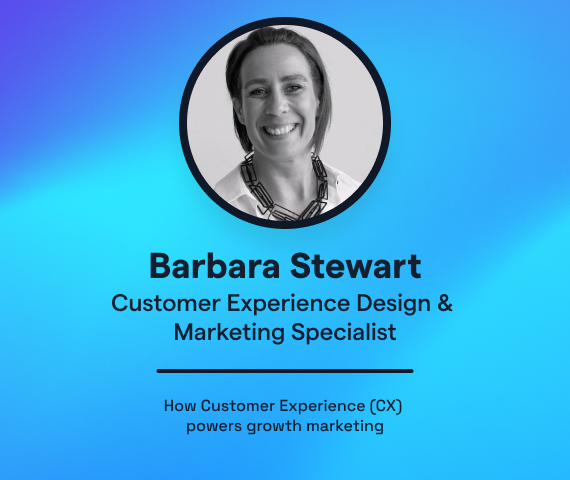Scalable Content Marketing: How to Maintain Quality & Consistency While Publishing More
Are you already producing content and have bought into the idea of content as a growth strategy? Do you plan to build a content team or work with an agency?
What are you waiting for? Let’s dig in.
Key Principles of Consistent Publishing
First off, what are the key principles you should be following if you want to up your content game?
- Documented standards: Each process needs clear guidelines and examples for creators to reference
- Clear roles and responsibilities: There can be no debate on who is responsible for a particular step in the process
- Team transparency: Editors and managers need to know who is working on what, to identify and fix bottlenecks.
- Accountability for each stage: Editorial review & feedback are standard for content at any stage of creation.
Your team needs to know what the standards are. You want clear roles and responsibilities and a lot of transparency in the team. When producing content there are many interdependencies, so people need to know what they are accountable for.
There needs to be consistent feedback, and the writers need to be prepared to receive that feedback.
If you have clearly defined roles, clear deadlines, and streamlined processes for passing work back and forth, you will have a much more effective content team.
Use a tool such as Pipefy, Asana, or Google Sheets to keep track of each workflow.
Write Your Guidelines
For success with your content efforts, you want to produce the following documents, so your writers produce consistent work:
1. Overview of the Editorial Process
What process is used to take content from idea to finished product? If you have a straightforward process, your team will know where they stand and what is expected from them.
Check out this outline by Smashing Magazine. It is an excellent example of the editorial process.
2. Style Guide
How does your brand communicate? What voice and tone do you take with your customers?
Style guides are essential for writers to get the messaging of the content right. Things to include in your style guide:
- Samples of on-brand writing
- Guidelines on voice and tone and how your brand speaks to your customer
- Who your key customer is and their level of sophistication – what should writers assume they know?
- Create a glossary of industry terms to use in your content
If you get the style guide right, it will make the writers’ job much more manageable. Here are some great examples of style guides from big brands.
What Is the Content Production Process?
These are the steps you should consider when starting the process of taking content from idea to publication:
- Content ideation
- Research & outlining
- Drafting
- Adding rich media
- Final review
- Publishing
- Promotion
- Measuring impact / ROI
Let’s go deeper into each of the points.
Content Ideation
How can you generate ideas to start creating unique, quality content?
1. Competitive Keyword Research
You need to know what your target customers are searching for.
What is working from a link-building perspective, and what is driving people further down that funnel?
2. Ask for Direct Feedback
Conduct a poll with your existing customers to ask which topics they want to hear about from you.
Hang out where your customers are hanging out. Check Quora and Reddit forums, private Facebook groups, and industry-specific forums to see what questions they are asking.
Another tip here is to check paid private courses for your audience. These courses have already built up a relevant audience for your industry. These are people who are already investing in themselves and their business. They are a goldmine of ideas for potential content.
3. Conduct a SERP Analysis
You can assume search intent from keyword research, but if you look at the actual search results and see what is ranking, it often reveals different intent than the keywords may indicate.
An example of this: your keyword is ‘best product’, so you create a listicle with the 10 top products that do X.
When you type the keywords into Google, the pages ranking are actually ‘the best X product for the money’. The intent here was a value intent rather than the best of the best available.
Checking the already ranking content for your keywords can give you valuable insight into the searchers’ intent.
Research and Outlining
1. Do Your Information Gathering
Read competitor articles to see what depths they go into on a subject. Interview an expert who can speak with authority on a topic. Conduct original research.
Poll a particular audience to find out information that nobody else has. Make sure your content will be interesting and unique. Original research is also excellent for your content promotion efforts.
2. Produce the Outline
Turn the research into an outline. How do you want the content to flow? How will it drive towards a relevant business outcome?
3. Get Outline Feedback From Your Editor
Is the outline on brand structured in a way that is easy to read, and is there promotion potential? Is the angle the topic is covered promotable and is it likely to have an audience of a decent size?
Reordering and changing the structure of the article is likely to occur during this phase. Your editor may also see an angle that will have a better promotional angle, for example.
4. Drafting
- Turn the outline into a draft
- Get Draft Feedback – The editor needs to give the writer feedback on the tone of voice, and flow of the piece.
- Final draft – The writer implements the edits and makes sure everything is correctly formatted for publication.
5. Add Rich Media
- High Quality – You need to make sure your images and videos are high quality but aren’t going to affect the load time of your page. Use a compressing tool or plug-in for your site.
- Don’t Let it Distract – If the media is there to support the text content, don’t let it distract from the point the text wants to make.
- Appropriate? – Is your media on brand and appropriate for the content? Do you have permission to use the image? Make the image self-hosted so it doesn’t break if the source changes the location.
- Mark Up With Metadata – Is the media responsive, and does it change with the size of the page? Make sure you include image alt tags.
Final Review
Make sure nothing is missing or has got lost in the process. Get someone to give it one last look over with fresh eyes.
1. Publishing
- Trust – Is this something that will boost your brand’s reputation? Will it make your customers trust you more than less? Make sure there isn’t anything in the content that might damage your reputation.
- Links – Do you need to do internal linking to pass link juice around your site? Remember that internal linking will drive user time on your site.
- Shareability – Is your content easy to share? Are the settings formatted correctly so an image is shared on social media?
- Timing – Publish when your audience is awake and publish it at a time people are likely to read it; what’s happening in the world that may take attention away from your content? Maybe you need to reschedule the publish time.
- Technical Checks – Make sure different browsers can access your content. Is your content SEO optimized? Are those metatags in place?
2. Promotion
- Pre-Launch Marketing – Hint at content coming out soon via your social accounts. If you have interviewed someone from outside your company, let them know when it is expected to be published, share a link in advance. You can even reach out to other influential people in your industry to let them know about a piece of content you have coming out. You can’t do this for every piece of content, but it can help drive promotion for big research pieces.
- Social and Email Sharing – Share the content across your social channels and to everyone on your email list.
- Link Building – The biggest driver for organic growth is backlinks. Do some outreach to ask for backlinks but make sure it is done organically and professionally.
3. Measuring Impact
You want to measure the performance of your content, so you find out the ROI. What was the goal of your content?
Was it to build your email list, produce leads, or drive purchases? Make sure you monitor your content based on the goal you set for it.
Set a reminder in your project management software to review the impact of your content a few months after it has gone live. You can check if any tweaks need to be made or if you need to repromote it.
Get Your Content Strategy Started
Try not to get overwhelmed by all the steps in the process! Creating an efficient and robust editorial process takes time and multiple iterations.
It is well worth the effort. Start with the steps that you or your team struggle with most. This will make getting started easier.
You can schedule a free growth mentor session with me if you want more guidance to get started with your content flow.
You can also check out my guide to building an effective editorial process.



